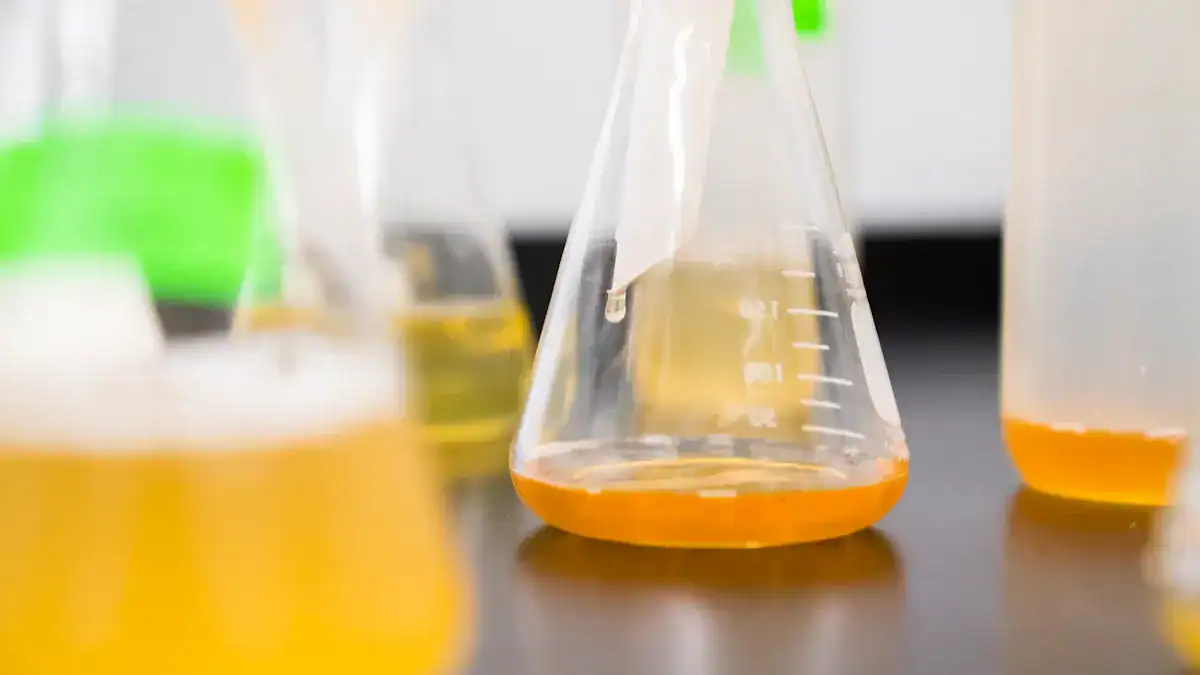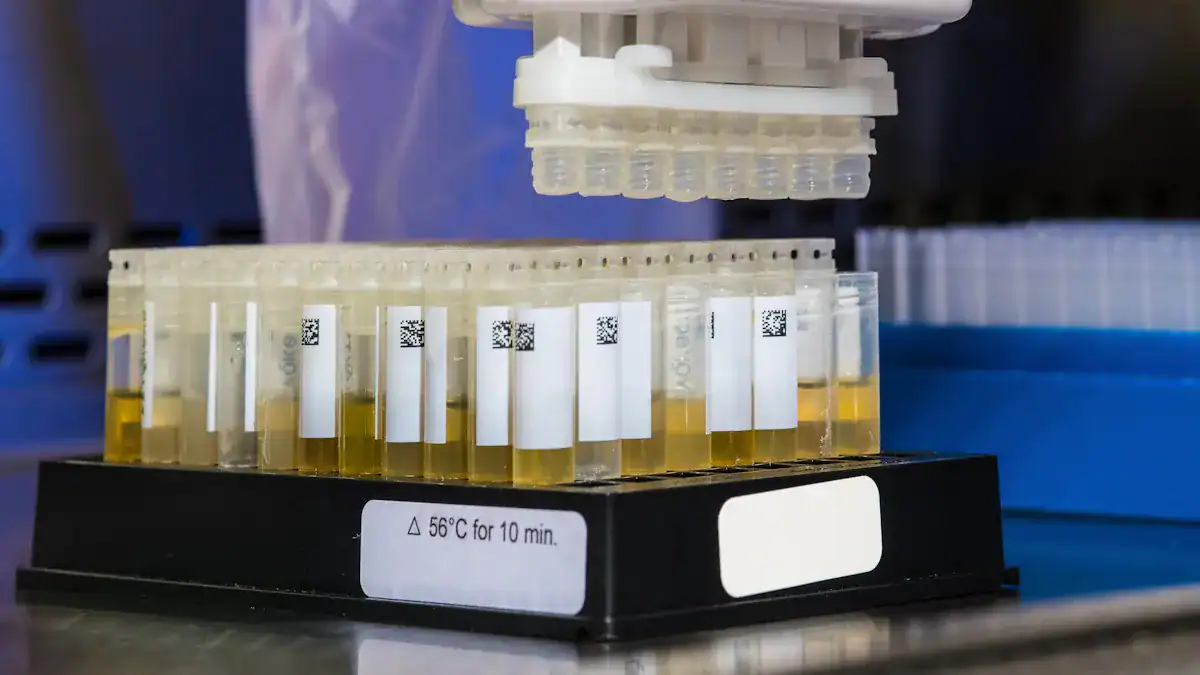
Your urine color offers a simple yet powerful look at your overall health and how much water you drink. You can identify potential health issues early, such as signs of diabetes, kidney problems, or infections. This post provides a comprehensive urine color chart. It guides you on what different urine colors mean and when you should seek medical advice.
Key Takeaways
Your urine color shows your health. Clear to pale yellow urine means you drink enough water.
Dark yellow urine means you need more water. Drink water to stay hydrated.
Unusual urine colors can come from food or medicine. They can also signal health problems.
See a doctor if your urine color changes a lot. Also see a doctor if you have other symptoms like pain or fever.
Your Urine Color Chart: Healthy Hues

When you are healthy and hydrated, your urine color should range from colorless to light straw and honey. This section of our urine color chart helps you understand these normal variations. You can use this chart to quickly assess your hydration levels.
Clear Urine
Clear urine means you are likely drinking too much water. While staying hydrated is important, excessive water intake can sometimes be harmful. Consistently clear urine can indicate:
Hyponatremia (water intoxication): Drinking too much water can dilute the sodium levels in your blood to dangerous, potentially fatal levels.
Underlying medical conditions: Consistently clear urine may signal an underlying condition. These conditions require a medical assessment for proper diagnosis. They can include kidney complications or blood chemistry problems. Certain kidney issues, like salt-wasting nephropathy, can also cause your kidneys to excrete too much salt, leading to colorless urine.
If your pee is always clear, you might want to reduce your water intake slightly.
Pale Yellow Urine
Pale yellow urine is the most optimal color for ideal hydration. This light, straw-colored pee shows you are well-hydrated. Your body has a good balance of fluids. This is the goal for your daily fluid intake. You are doing a great job keeping your body properly fueled with water.
Dark Yellow or Amber Urine
Dark yellow or amber urine suggests you need to drink more water. This color is a common sign of dehydration. When you are dehydrated, your urine becomes very concentrated. The deep golden hue comes from the yellow pigment urochrome.
This pigment is less diluted when your body lacks enough water. An increase in urine osmolality, which measures concentration, directly relates to a darker yellow urine color. More dehydrated samples show a higher yellow color and a lower lightness. If you see yellowish to amber urine, reach for a glass of water. Bright yellow urine can also appear if you take too many B vitamins. Your body simply excretes the excess.

Unusual Urine Colors Explained
This section of our urine color chart explains unusual urine colors. These colors can signal various things. They range from harmless dietary changes to serious medical conditions. Understanding these urine colors explained here helps you know when to seek medical advice.
Orange Urine
You might see orange in your pee. This can happen for a few reasons. Sometimes, a medication you take causes it. For example, Phenazopyridine is a medicine. It can make your output red-orange or brown. This side effect is usually harmless. Other times, an orange hue can point to a health issue. Cholestasis is one condition. It stops bile from flowing between your liver and small intestine.
This causes bilirubin to build up. Bilirubin then tints your pee orange. Cholestasis can come from acute hepatitis or alcoholic liver disease. Some medicines, like amoxicillin, can also cause it. You might also have pale stools, yellow skin, or itchy skin.
A urinary tract infection (UTI) usually makes your output cloudy. But if you take medicine for a UTI, that medicine might turn your output orange.
Pink or Red Urine
Seeing pink or red urine can be alarming. Many things can cause this color. Some are harmless, like certain foods. Beets can turn your urine pink to deep red. This happens to about 10 to 14 percent of people. It is more common if you have an iron deficiency.
Large amounts of rhubarb can also make your urine pink or red. Blackberries, cranberries, pomegranates, and fava beans can also change its color. Even hibiscus tea or red food coloring, like Red 40 in cakes, can cause red urine.
However, red or pink urine can also signal a health problem. Urinary stone disease is a common cause. This includes kidney stones, bladder stones, and ureteral stones.
Bladder infections, kidney stones, or an injury to your groin can also lead to red urine. Very hard exercise, like running a marathon, might cause it too. More serious conditions include kidney disease or cancer in your bladder or kidney. Sometimes, a harmless inherited condition called benign familial hematuria causes it.
Menstruation, vigorous exercise, viral illness, trauma, or a urinary tract infection (UTI) can also make your urine red. Any condition that causes your kidneys, ureters, bladder, or urethra to leak blood will result in red urine.
Blue or Green Urine
Blue or green output is less common. It can be surprising to see. Certain medications are often the cause. Methylene blue, found in some medicines like Trac Tabs, can turn your output blue or green. Other drugs like Amitriptyline, Doxorubicin, Indomethacin, and Cimetidine can also do this. Phenergan, Triamterene, Propofol, and even Sildenafil are on the list. Sometimes, B vitamins can also lead to a greenish tint.
Rare medical conditions can also cause these unusual colors. Familial benign hypercalcemia is a genetic illness. It can cause blue output due to problems with how your body absorbs tryptophan.
Hartnup disease is another rare genetic illness. It also links to blue output from tryptophan absorption issues. A Pseudomonas infectioncan cause green output. This happens because the bacteria make pigments like pyocyanin. Rarely, bile pigments like biliverdin can lead to green output. This might come from an enterovesical fistula.
Dark Brown Urine
Dark brown urine can be a serious sign. It often means you need medical attention. Liver disease is a common cause. Hepatitis, from viral infections like A, B, or C, can inflame your liver. This results in dark urine. Cirrhosis is a chronic liver condition. Healthy liver tissue gets replaced with scar tissue.
This harms liver function and causes dark urine. Liver cancer can also block bile ducts. This leads to bilirubin buildup and dark urine.
Other serious conditions can also cause dark brown urine. Acute hemolytic anemia is one. This condition destroys too many red blood cells. You might also feel tired, dizzy, or have pale skin. Significant trauma can also lead to dark brown output. Rhabdomyolysis is another cause.
Damaged muscle tissue releases proteins into your blood. This can harm your heart and kidneys. Dark urine can be an early sign. Kidney diseases, like post-streptococcal glomerulonephritis, can also result in reddish-brown or dark urine. Melanoma, in rare cases, can cause skin pigment to leak into your bloodstream. This turns your output brown. Babesiosis, a tick-borne infection, also lists dark urine as a symptom.
Cloudy Urine
Cloudy urine can look milky or hazy. It does not always mean a serious problem. Sometimes, your diet can cause it. For example, too much calcium phosphate from milk products can appear in your urine.
Dehydration can also make your urine cloudy. When you do not drink enough water, your urine becomes concentrated. If you feel fine otherwise, just drink more liquids. Low acid, or alkaline urine, can also appear cloudier. A diet high in fruits and vegetables, common for vegans, can raise your urine pH.
However, persistent cloudy urine can signal an infection or medical condition. Urinary Tract Infections (UTIs) are a common cause. Bacteria enter your urinary tract. Your body then secretes white blood cells.
Kidney stones can also cause cloudy urine. They form from salts in your urine. Small fragments or white blood cells from an infection can make your urine cloudy. Diabetes can lead to cloudiness. High sugar levels in your urine can disrupt bacterial balance. This increases your risk of UTIs. Kidney disease can also cause cloudy urine. Your kidneys do not filter waste well.
Prostate infection (prostatitis) in men can cause white blood cells and discharge in your urine. Sexually transmitted infections (STIs) like Chlamydia and Gonorrhea can also cause cloudy urine. For women, vaginitis, including bacterial vaginosis or yeast infections, can also lead to cloudy urine.
Foamy Urine
Foamy urine often looks like bubbles in the toilet. It can be harmless. Dehydration is a common cause.
When you are not well hydrated, your urine has more waste products. It foams easily. This foam usually disappears when you add water. Rapid urination can also cause foam. If your urine hits the toilet water quickly and with force, especially with a full bladder, it can foam. This is usually not a risk. In men, retrograde ejaculation can make urine foamy. Semen enters the bladder during ejaculation. This is generally not dangerous.
Heavy exercise can also cause short-term stress on your kidneys. This leads to harmless proteins in your urine. Fevers and acute illness can also affect kidney function. This may cause proteins in your urine temporarily.
However, persistent foamy urine can indicate kidney problems. Excess protein in your urine, called proteinuria, causes bubbles. This happens when protein mixes with water.
Damaged kidneys allow proteins to leak into your urine. Chronic Kidney Disease (CKD) can show foamy urine as an early sign. This is especially true if you have other symptoms. Relapsing Glomerular Disease can also cause foamy urine. This helps doctors detect a relapse early. Genetic kidney disorders can also show foamy urine. This helps families get an early diagnosis.
Other Factors Affecting Urine Color
Your urine color can change for reasons beyond hydration or illness. Many everyday things you consume or take can influence its hue. These changes are often harmless. You do not need to worry about them.
Dietary Impacts
What you eat and drink significantly affects your urine color. Certain foods contain pigments that your body excretes. For example, beets can turn your urine pink or red.
This happens to some people, especially if you have an iron deficiency. Blackberries, cranberries, and pomegranates can also cause a reddish tint. Carrots may lead to orange urine. Asparagus is known to produce green urine. Fava beans and rhubarb can result in dark brown urine.
Food coloring or dyes, like Red 40, can also give your urine a blue or green tint. Sugary foods, salty foods, alcohol, and caffeinated drinks can make your urine cloudy by affecting hydration. Milk and meat, in large amounts, might also cause temporary cloudiness due to phosphorus excretion.
When to Consult a Doctor

You now understand many things about your urine color. Most changes are harmless. But some urine color changes need a doctor’s visit. Knowing when to seek help is important for your health.
Persistent Changes
You might notice a change in your urine color. If this change lasts, you should talk to a doctor. For example, if your urine color change from vigorous exercise lasts longer than a day, seek medical advice.
If your urine looks cloudy or fizzy and it stays that way, consult a primary care provider. If you see a change but have no other symptoms, you can watch it for one to two days. If the change continues, or if you cannot find a clear reason for it, contact a healthcare provider.
Accompanying Symptoms
Sometimes, a change in your urine comes with other symptoms. These symptoms are important signals. If your orange urine comes with yellowing of your eyes or skin, you might have liver or bile duct issues. You need immediate medical attention for this. When dark brown urine comes with fatigue or abdominal pain, address it promptly with a healthcare provider.
If your cloudy urine has a foul odor or causes discomfort when you urinate, see a doctor. This helps rule out infections or other problems. Changes in your urine color with pain during urination, fever, or blood in the urine often point to urinary tract infections, kidney stones, or other conditions.
These need quick treatment. If you have dark brown urine and your skin or eyes look yellow, get medical help right away. If your urine color changes with burning when you urinate, frequent urges to urinate, or pelvic pain, seek medical evaluation.
Observing your urine color is a simple, powerful health check. This urine color chart shows you that many changes are harmless. They often reflect your diet or hydration. However, some colors can signal underlying health issues. Use this guide to understand what your pee tells you. Always consult a healthcare professional for persistent, unusual, or concerning changes in your urine. Be proactive in monitoring your health.



